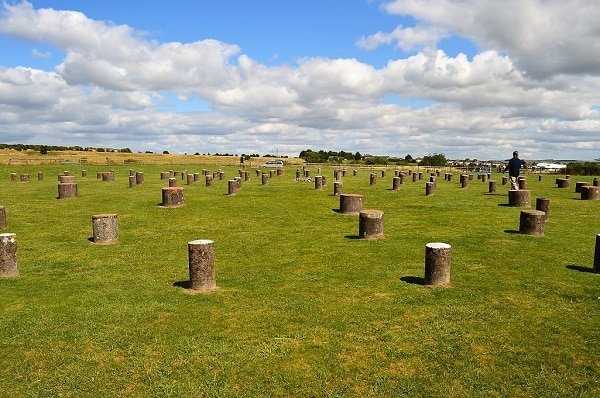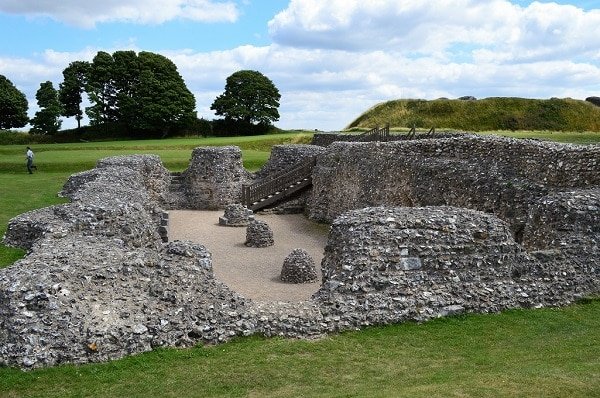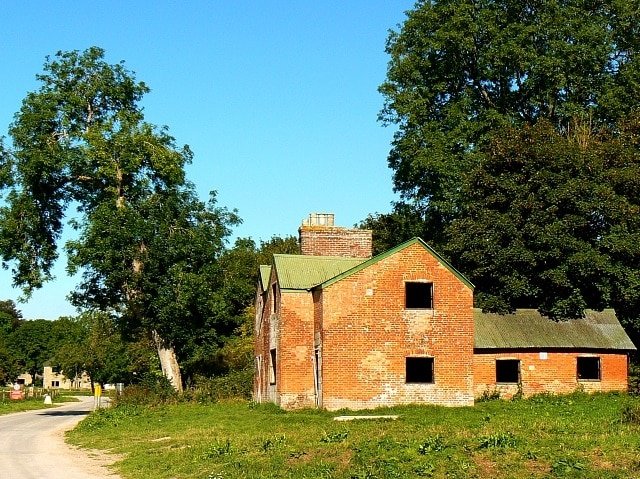
Located in the heart of Salisbury Plain, Stonehenge is instantly recognizable. The ancient stone circle attracts thousands of tourists each year, as well as visitors who seek to celebrate its believed mystical powers. Yet most people drive in, visit the attraction, and leave, completely unaware of nearby places of interest. This post will look at Stonehenge, but also at other spots to visit on Salisbury Plain.
Salisbury Plain
Salisbury Plain is an area of approximately 300 square miles, located mostly within Wiltshire. The Ministry of Defence owns much of the area and uses it for military training. As a result, a large portion of the Plain remains undeveloped, making it an important grassland habitat for a number of butterflies and birds.
But to many, Salisbury Plain is better known for its historical landmarks. People first came during the Neolithic Period, and excavations have revealed finds from Iron Age, Bronze Age, and early Anglo-Saxon settlements.
Stonehenge

Let’s start with the obvious. After all, most people who come to this area are doing so to visit Stonehenge. For thousands of years, people have been drawn to the iconic stone circle, trying to unravel its mysteries. Who built it? When? And why? And how did these massive stones make their way from remote Wales to this isolated plain in Wiltshire? Excavations and studied have revealed that the site was first used as a burial site for several hundred years. It was, and still is, an important site for Druids who gather at the stones for the summer and winter solstices. The stones are perfectly aligned for the sun to rise and set along their main axis in midsummer and midwinter.
An estimated 1.3 million people visit Stonehenge each year and in the peak of the summer holidays, traffic on the surrounding roads can be something of a nightmare. English Heritage suggests pre-booking your tickets to visit. We also suggest planning to be there at opening time, as that gives you the best opportunity to experience the tranquility of the site before the first busloads of tourists begin to arrive.
Woodhenge

Five miles to the northeast of Stonehenge is another site that’s worth a quick stop. As an added bonus, admission is free. Woodhenge is thought to have been built in approximately 2300 BCE as a burial site. Long forgotten and ploughed over, the site was discovered when a series of aerial photos showed a series of dark circles. Archaeologists excavated the site and found a series of rings and holes that would have once held timbers. Did they support some sort of roof? Were they markers and, if so, for what? No one knows for sure, although the discovery of a young child’s remains at the centre of the site indicates that this may have been a place used for sacrifices.
Today, concrete blocks mark the rings where the wooden posts once stood. Woodhenge is a quick stop, but offers another opportunity to wonder about the area’s earliest residents.
Old Sarum

Old Sarum is 2 miles north of Salisbury and 10 miles south of Stonehenge. English Heritage now operates the site, which includes the earthworks of the Iron Age hillfort, and the remains of both a Norman castle and the original Salisbury cathedral.
The ramparts of the hillfort date back to around 400BCE. They were expanded years later, either during the Iron Age or during the Roman occupation. Ancient peoples considered Sarum a site of great power. This belief continued into the Middle Ages, so much so that in 1070, William the Conqueror ordered a castle to be built there. In 1086, the noblemen of England gathered in the castle to swear their loyalty to the king. Just a few years later, the first cathedral was built nearby. Sadly, a storm destroyed it just five days after the consecration ceremony. A larger version replaced it, and stood for roughly 130 years until the present day Salisbury Cathedral was erected in what was then called New Sarum. Although long since demolished, visitors can see the outlines of the original foundations.
Old Sarum is the perfect spot for a picnic on your way to or from Stonehenge. It is open daily. Check in advance for jousting and children’s archaeological events.
Imber Village

For some more recent Wiltshire history, and if you happen to be in the area on a day when public access is granted, take a trip to the abandoned village of Imber. The residents of this small village were ordered to leave in 1943. For several decades, the War Office had been buying up the land around Imber, and the land the village stood on. On November 1, 1943, everyone was given 47 days notice to vacate. The site would be used as a training centre to prepare for a potential mainland invasion of Europe. At the time, residents thought they would be allowed back after the war. They weren’t.
The road through Imber is only open to the public a few days each year, but those few days provide a fascinating opportunity to visit what is essentially a ghost town. The Imberbus service runs an annual drive through the area on a fleet of old-fashioned red buses. Be aware that the area is still used for military training, and so access may be closed at any time.



One thought on “On Salisbury Plain: Exploring Ancient England”
Comments are closed.